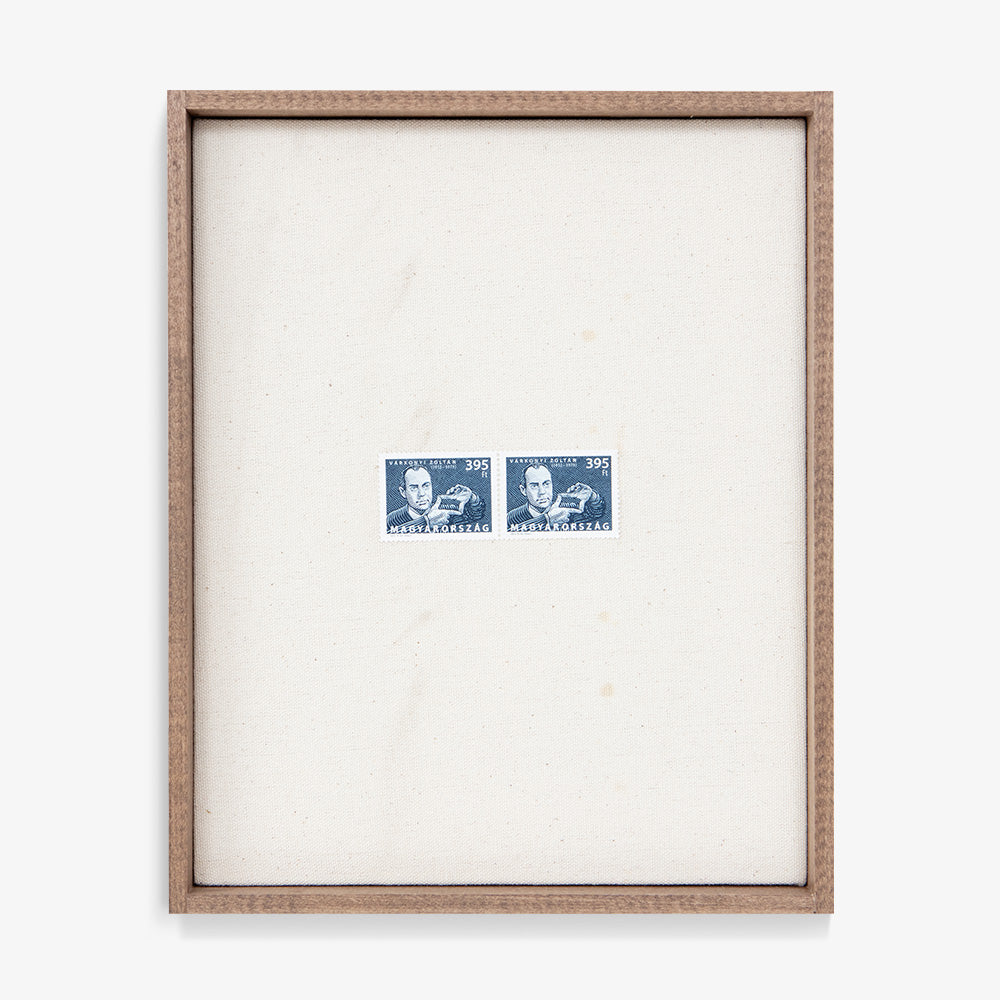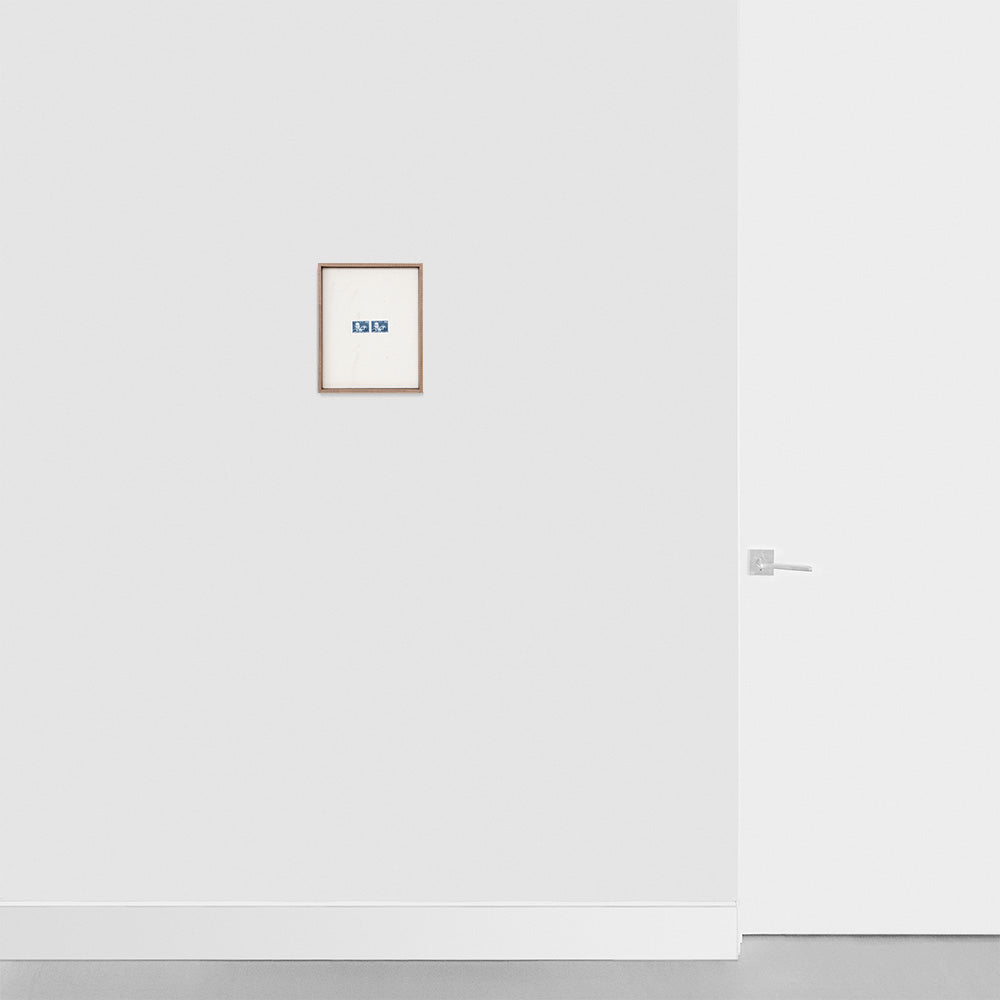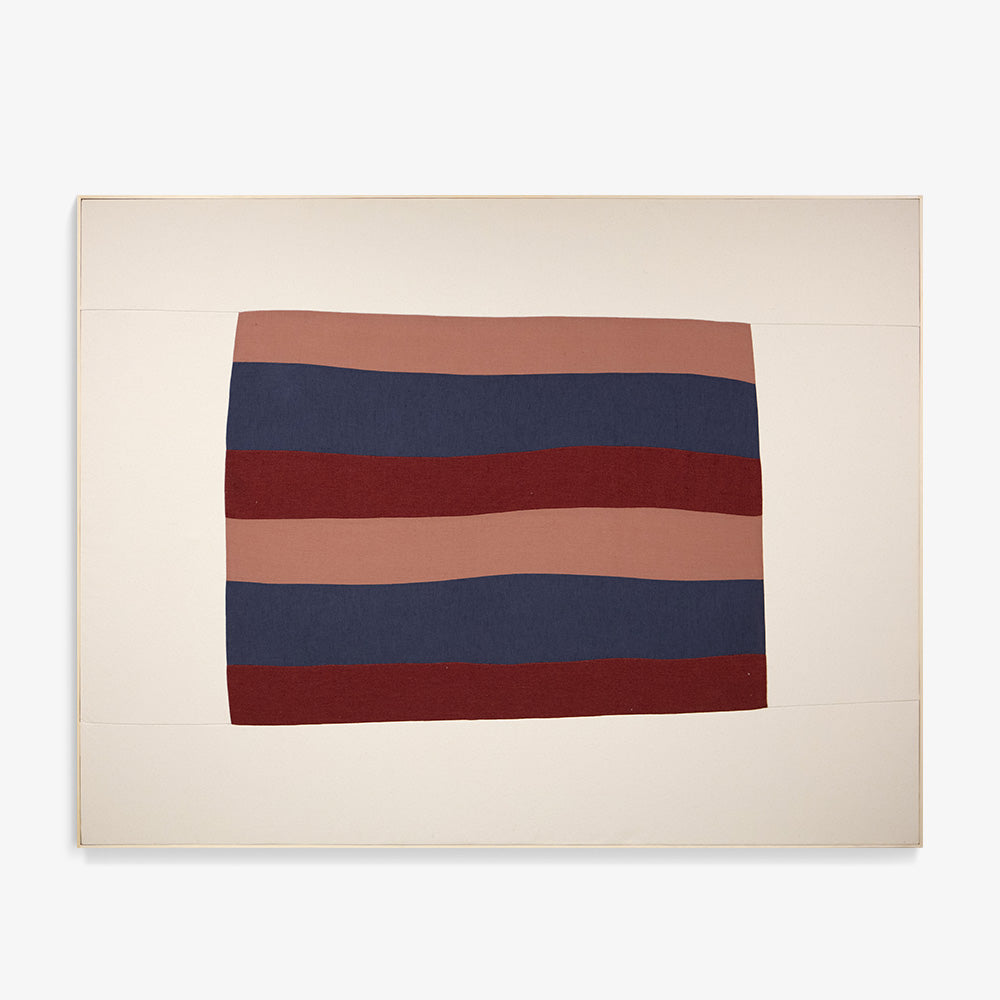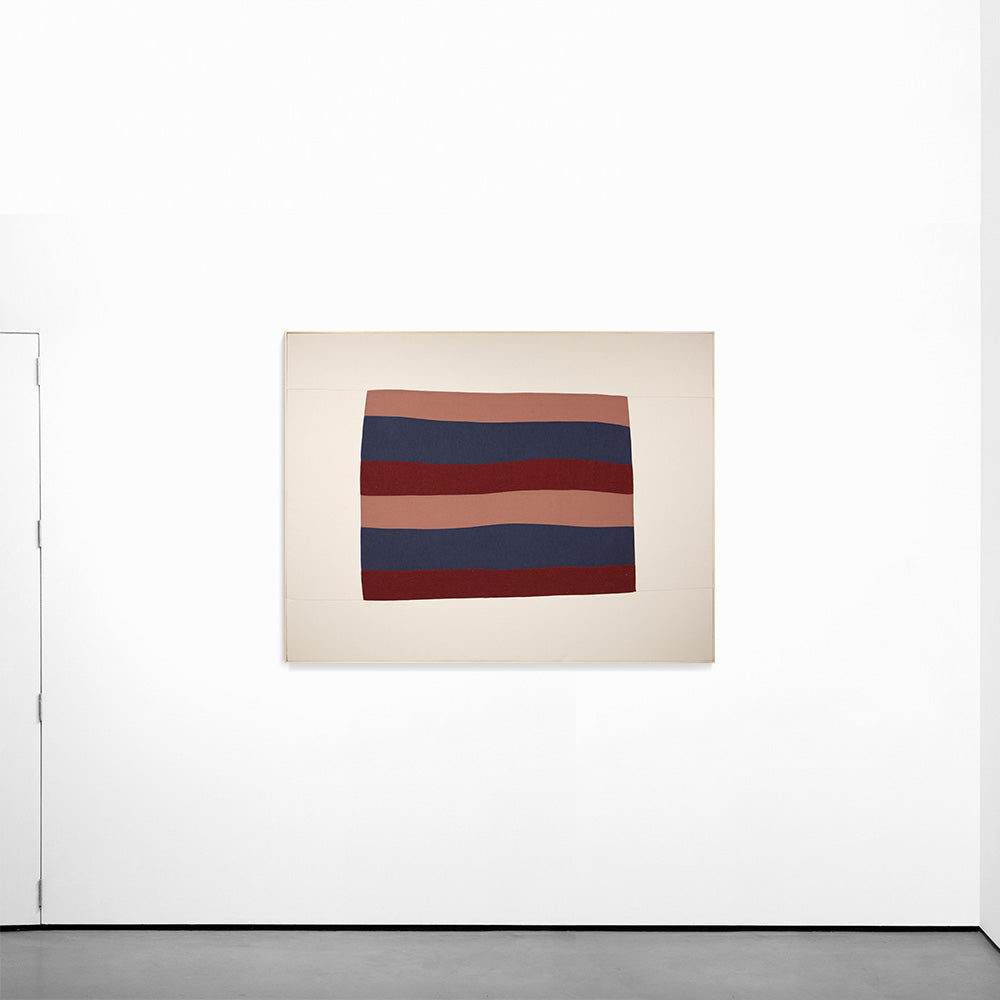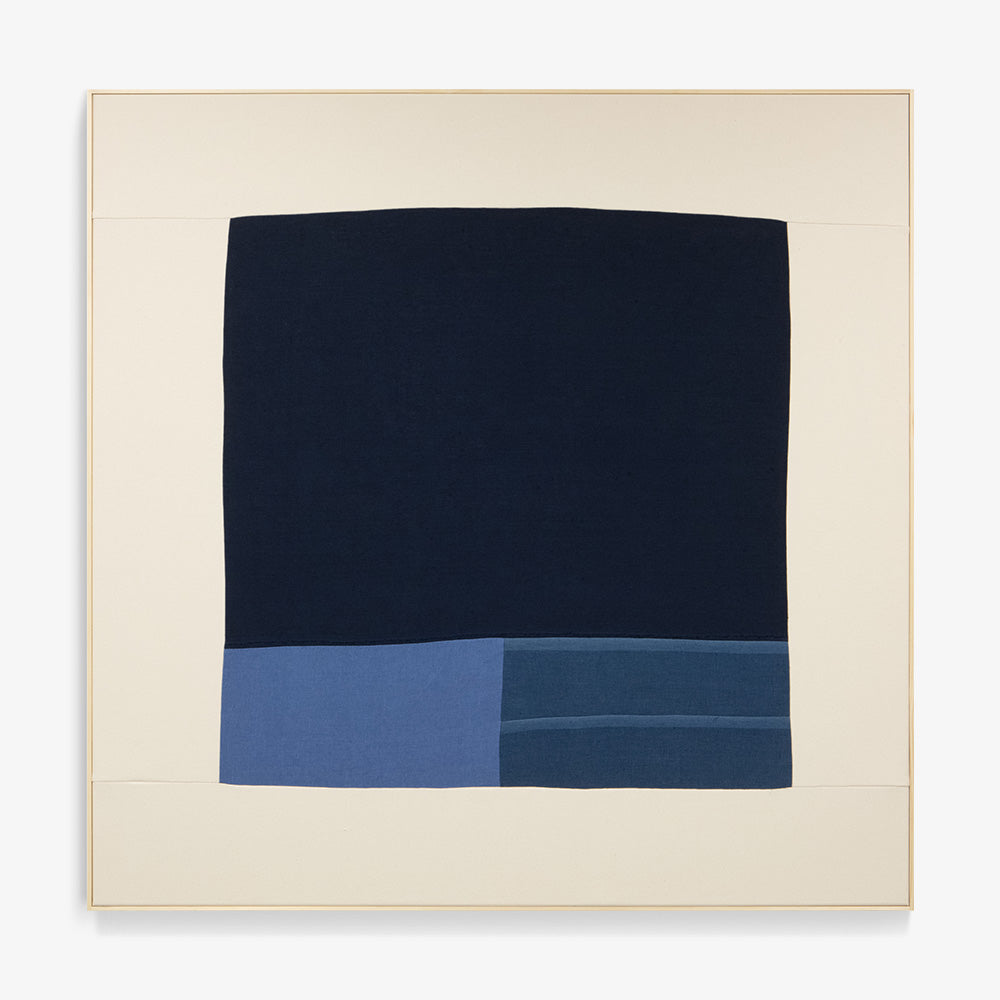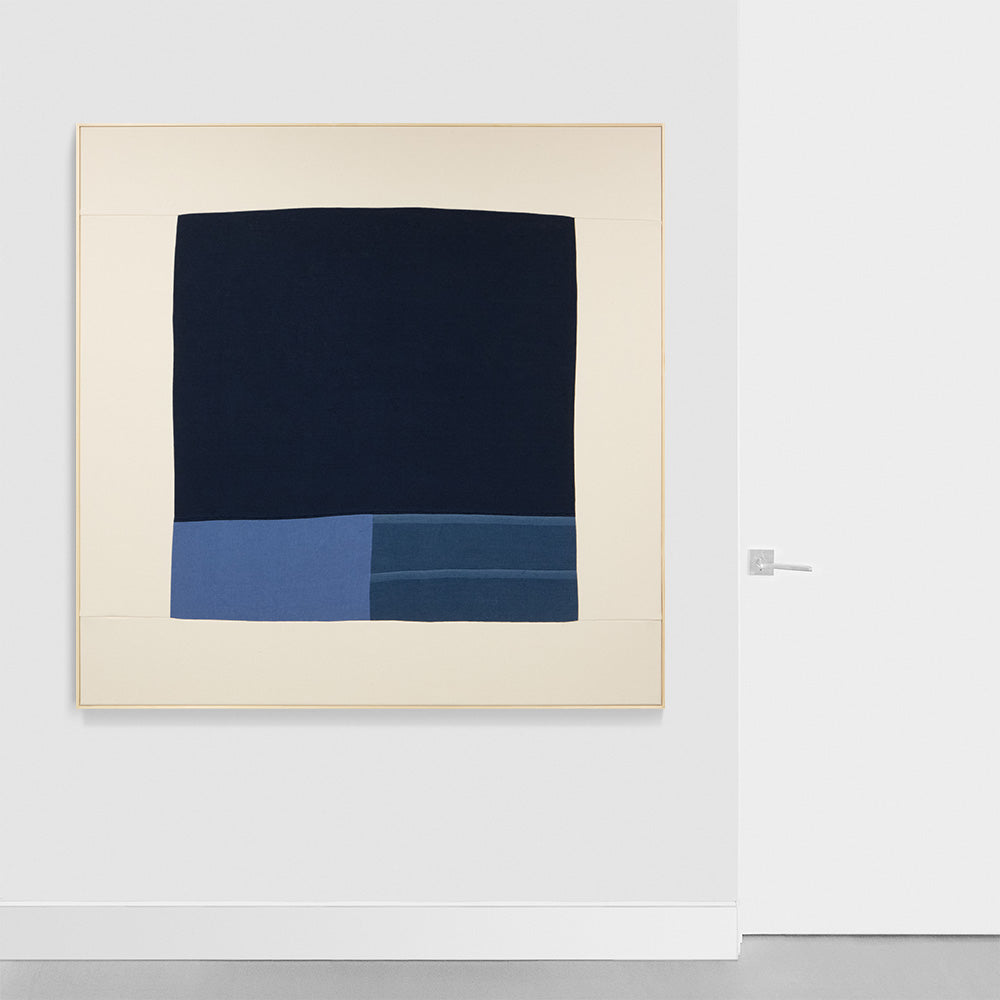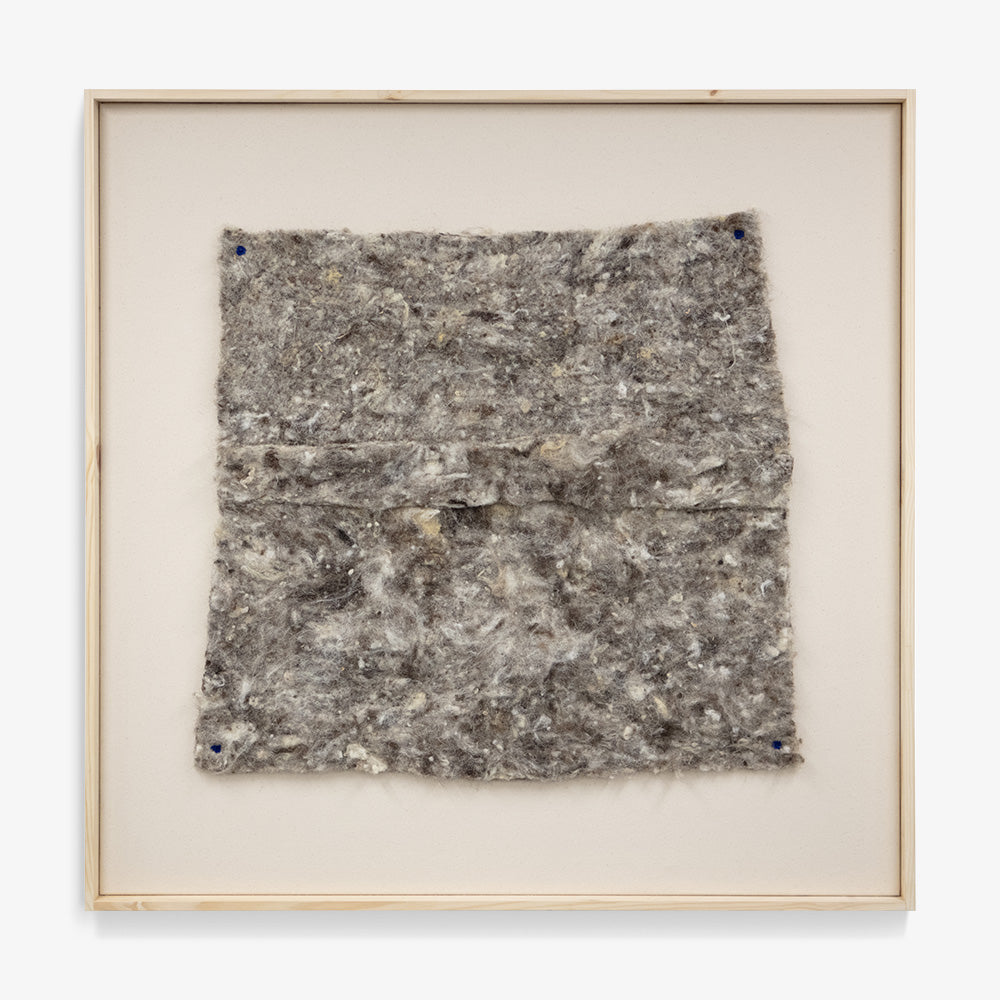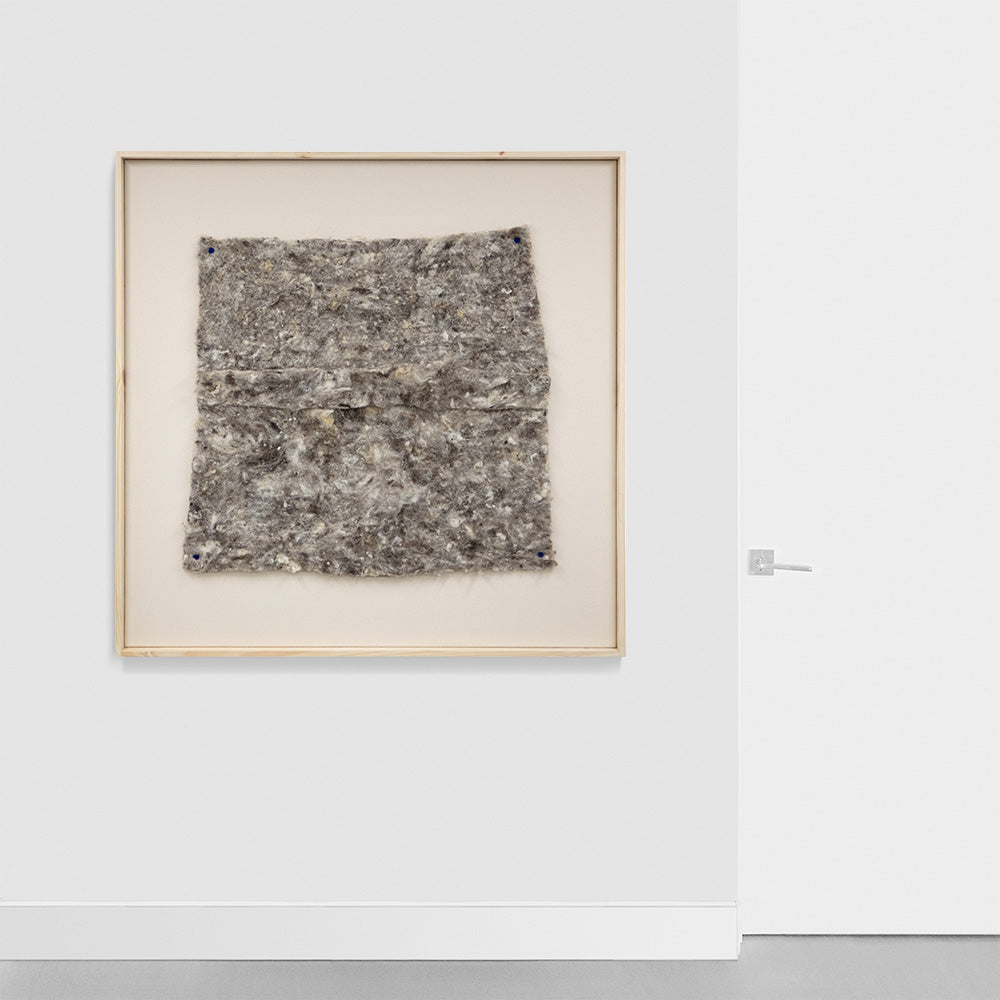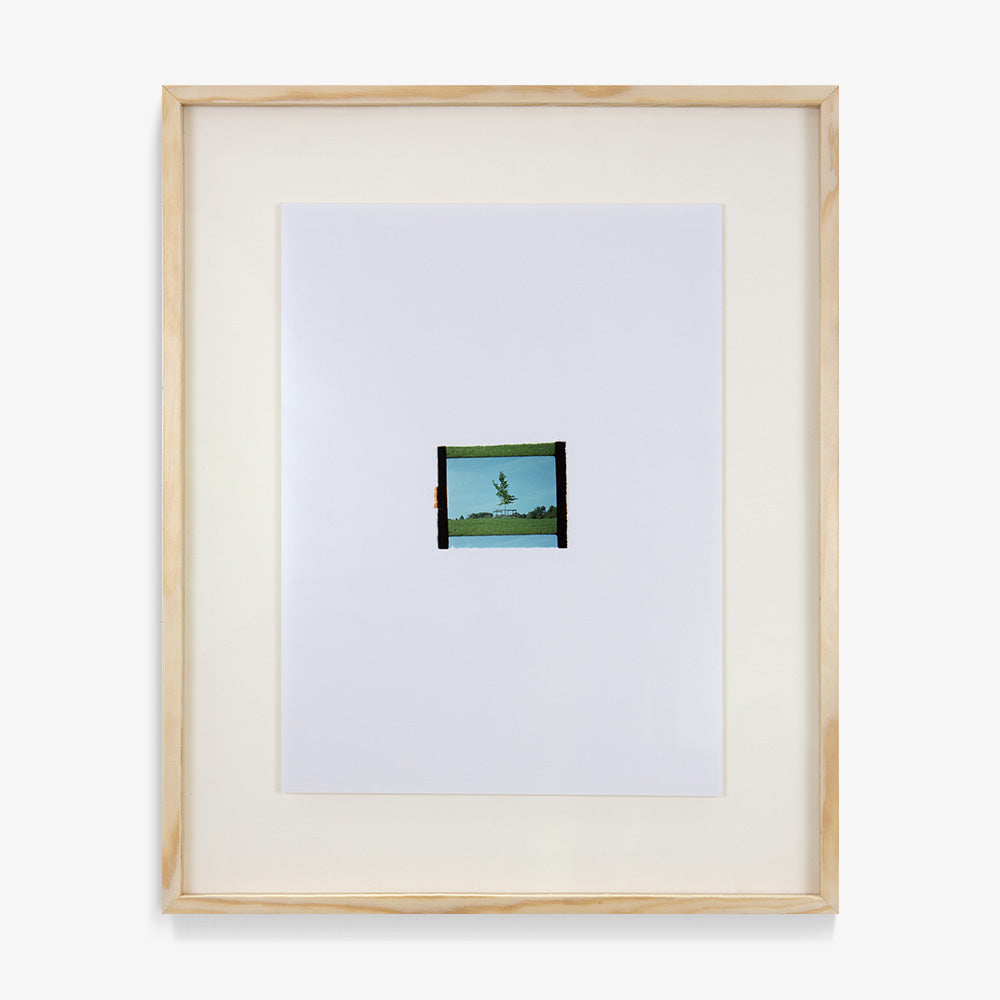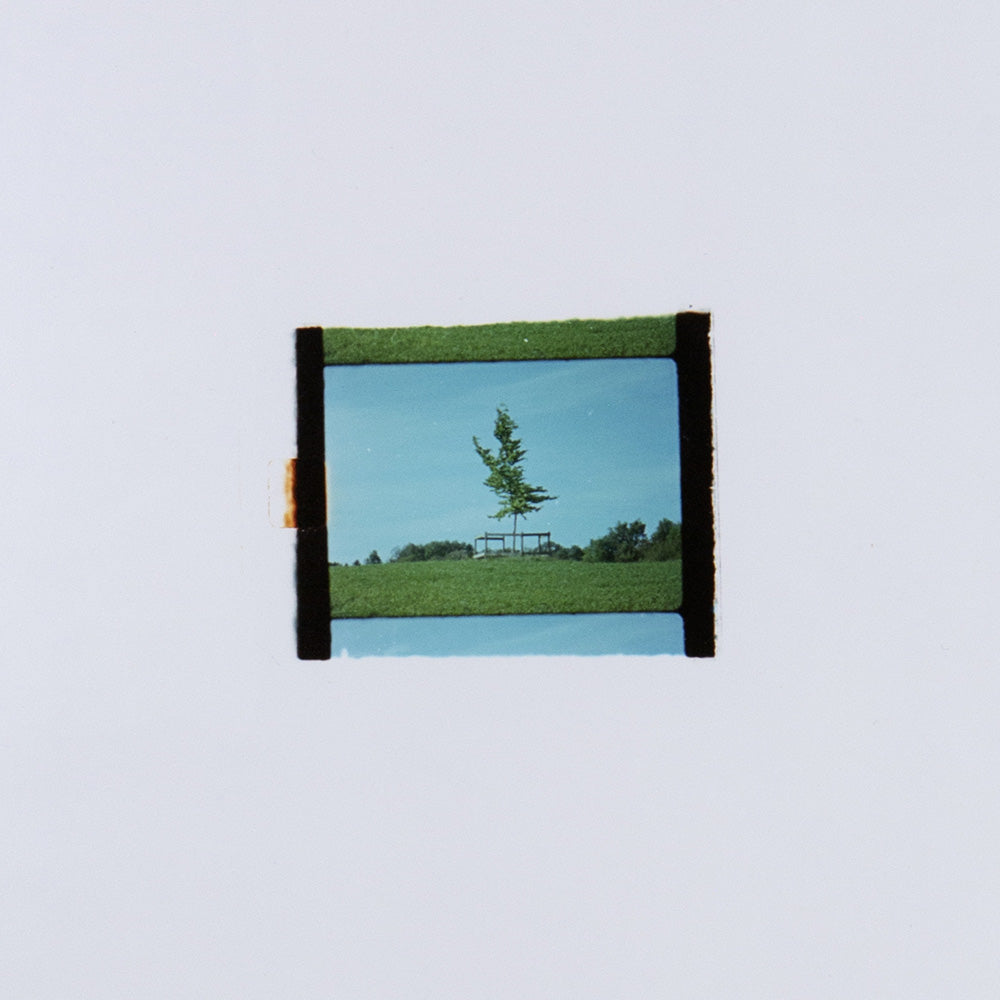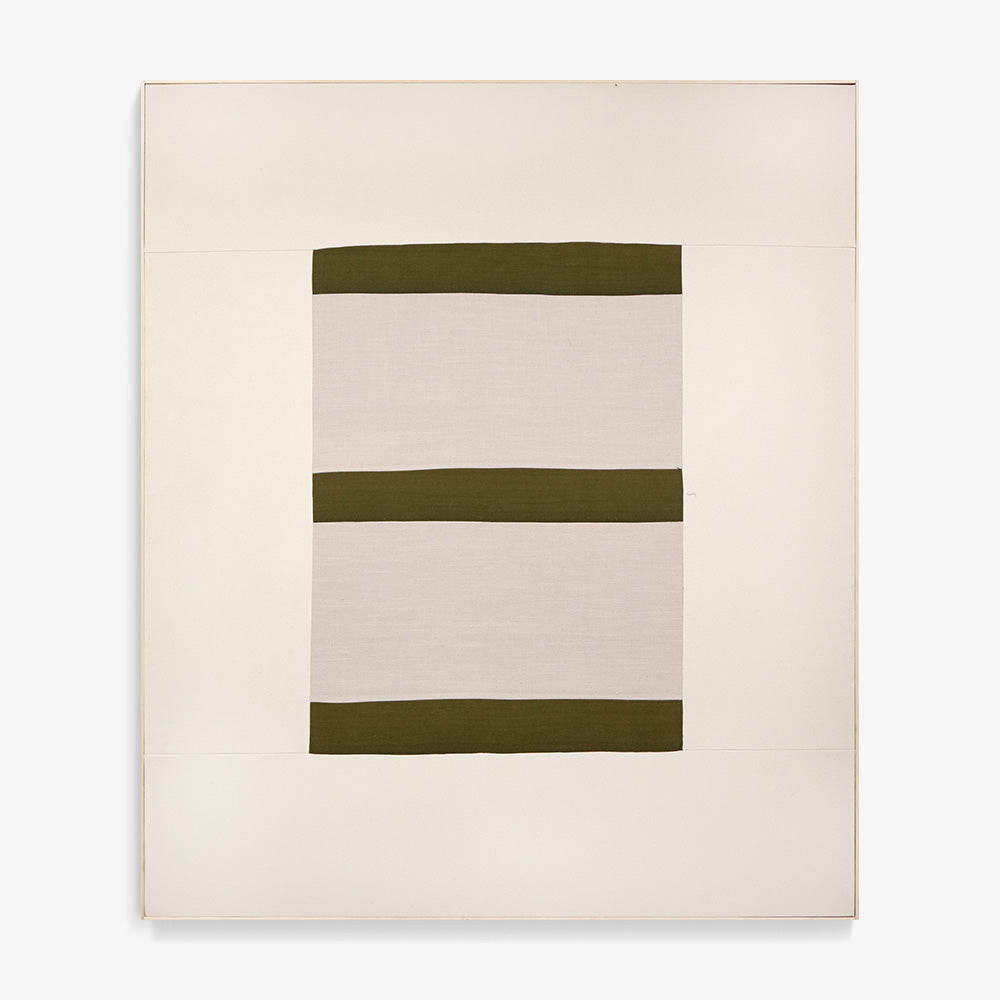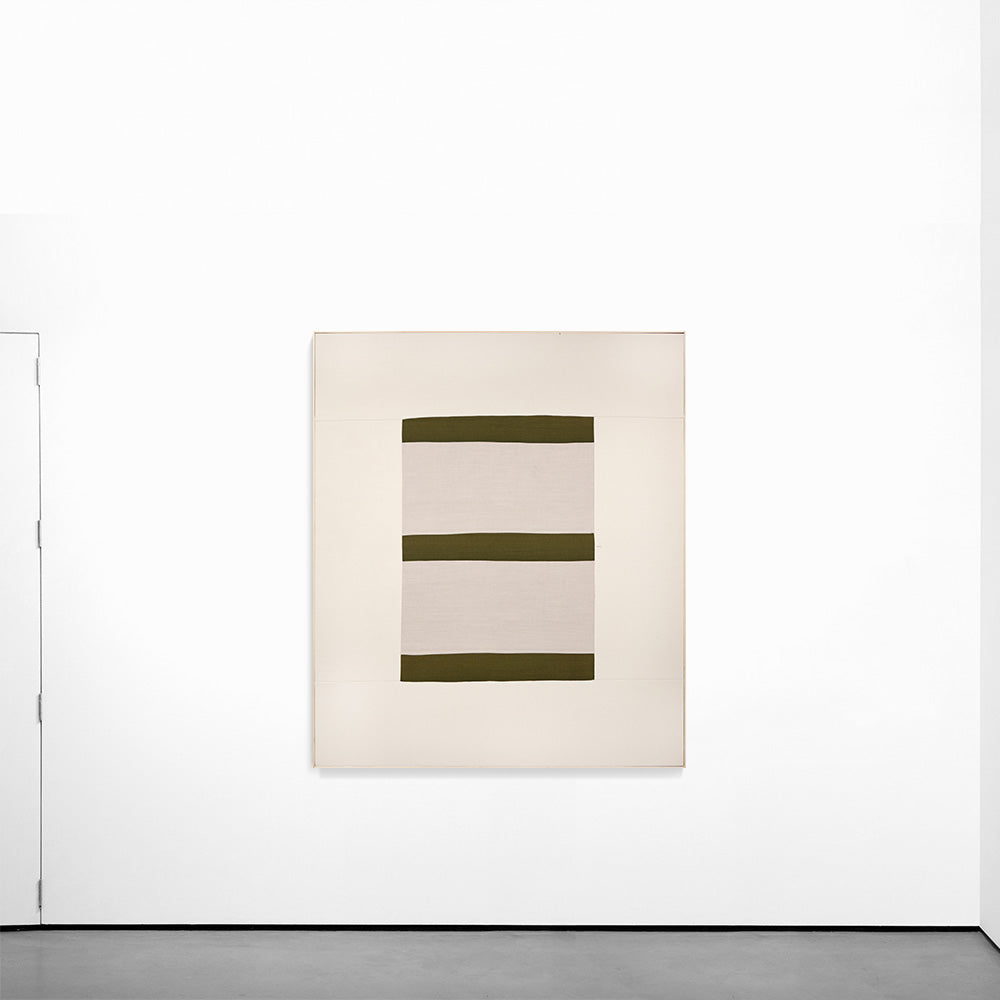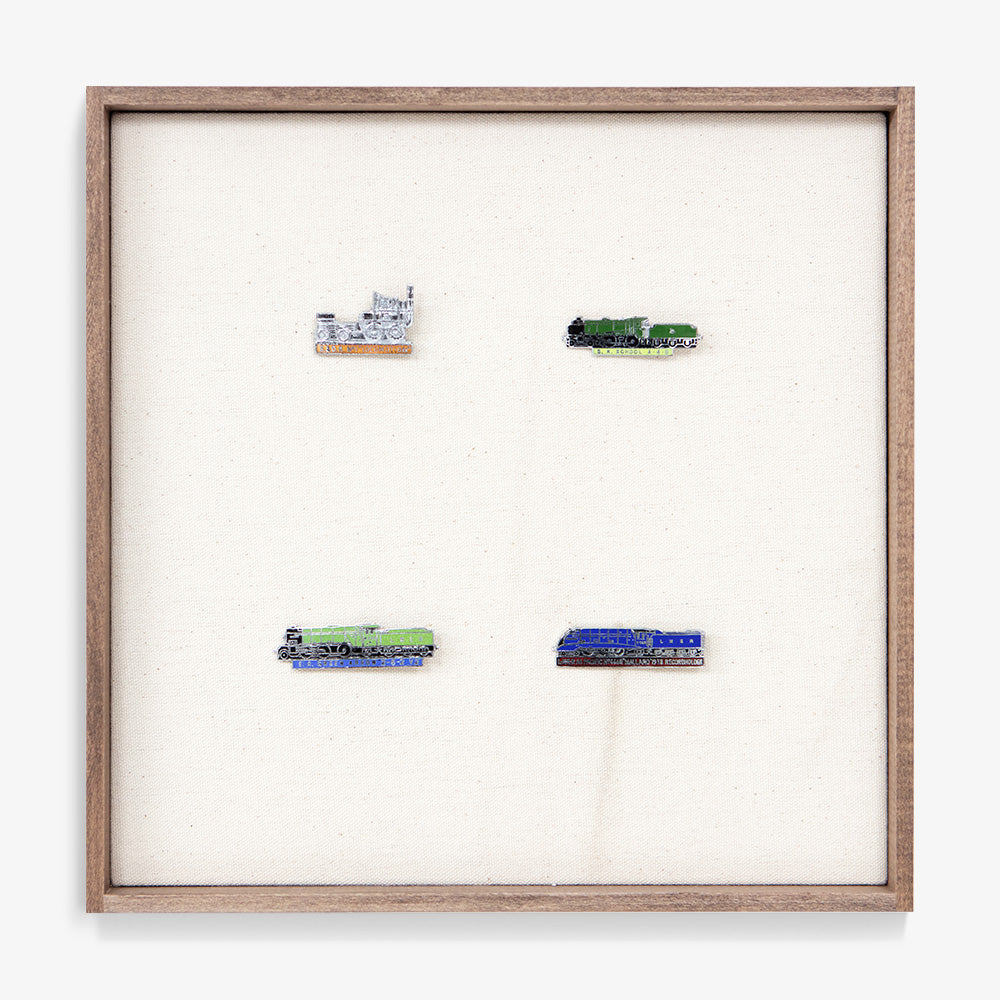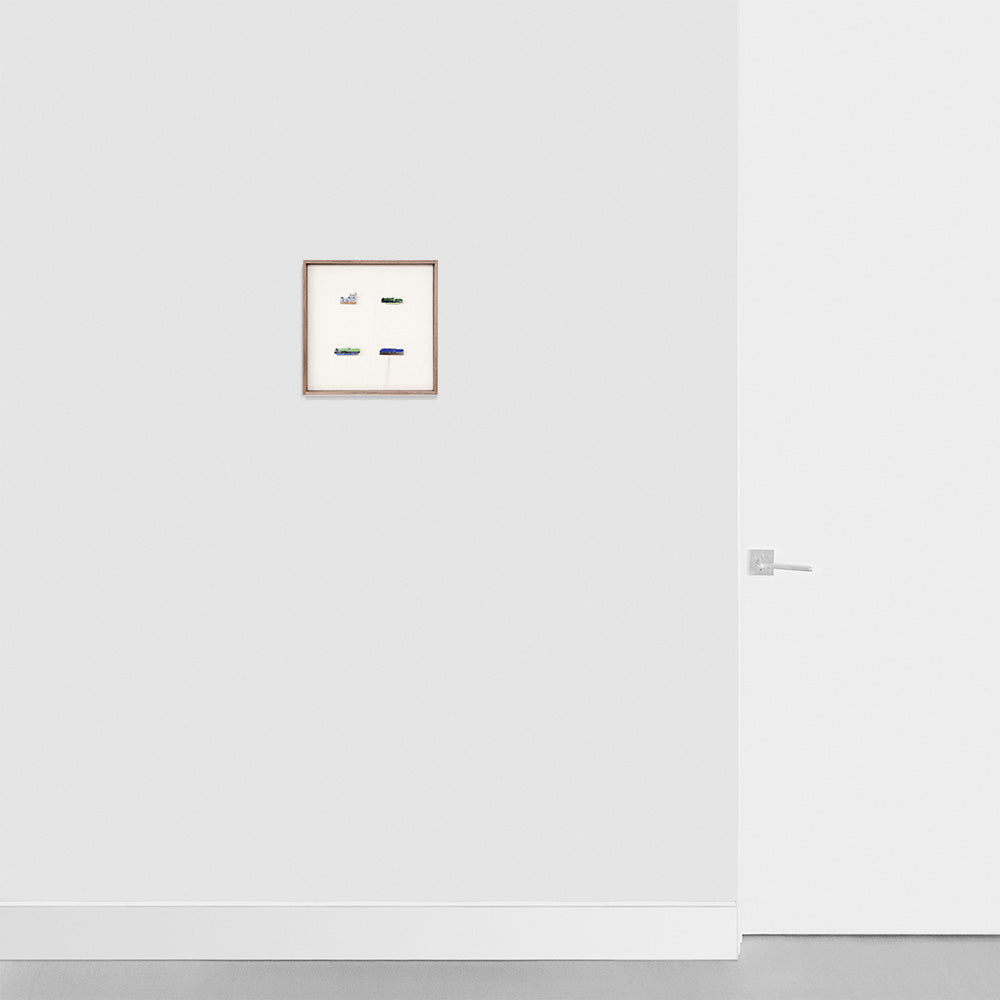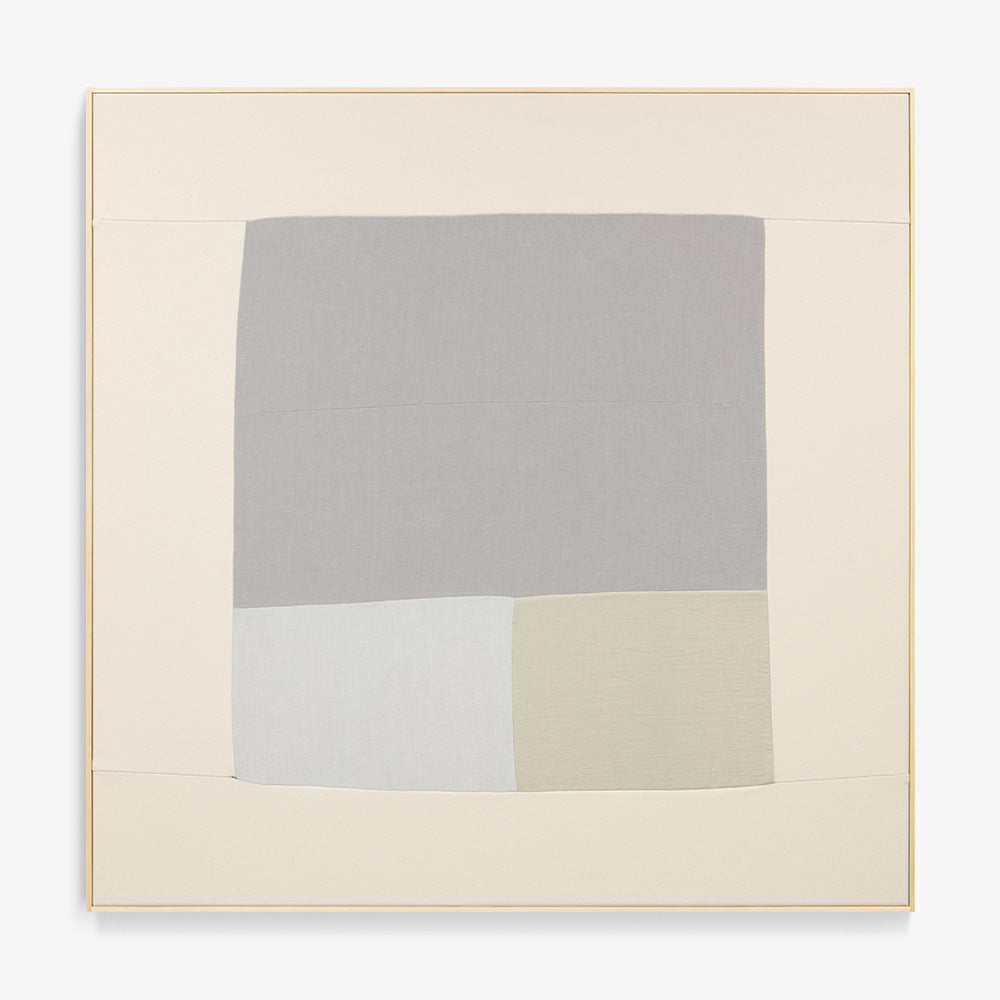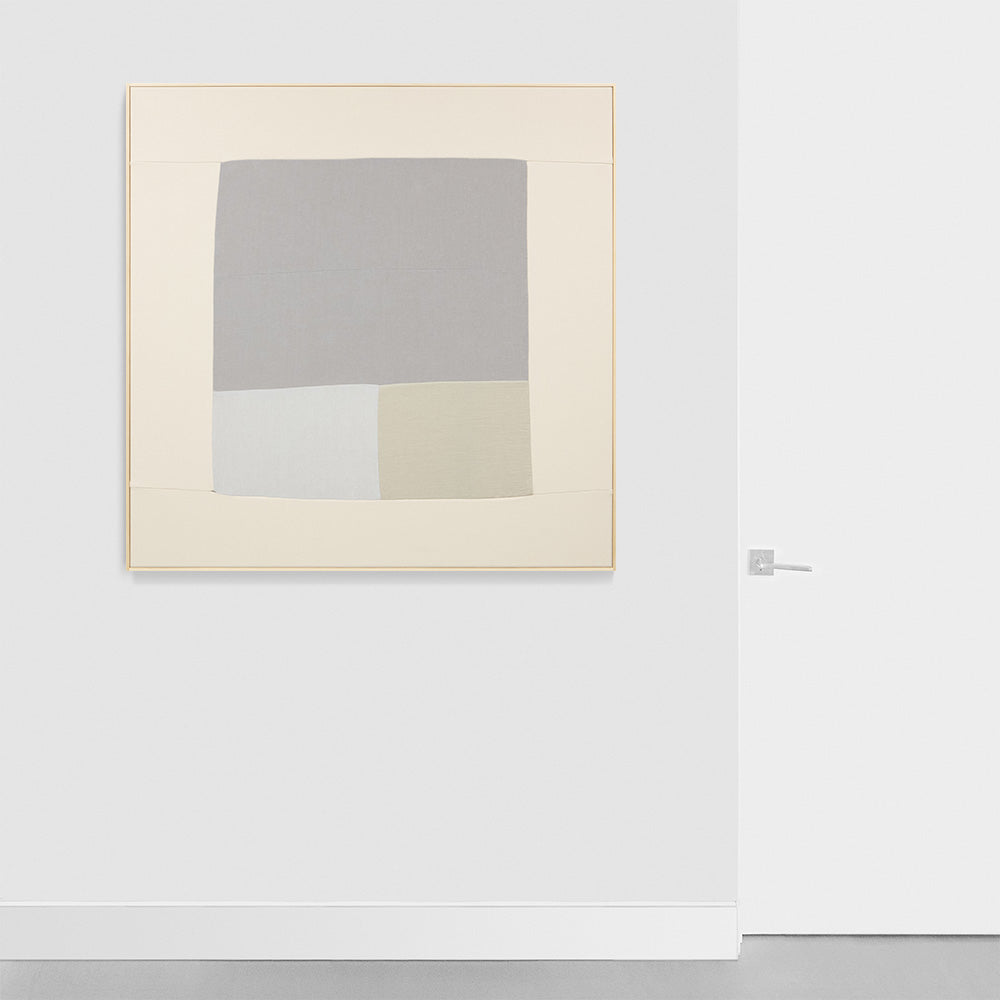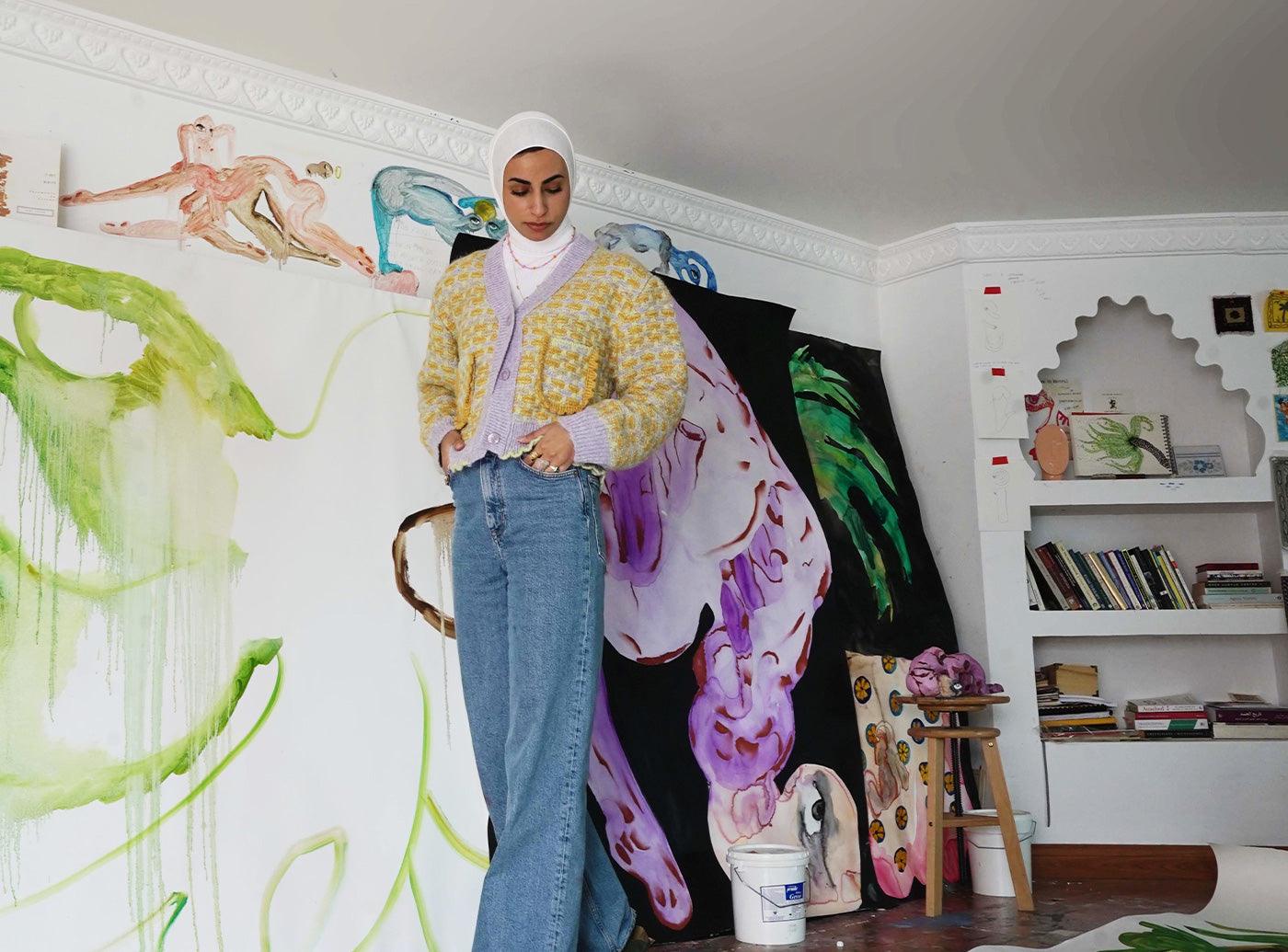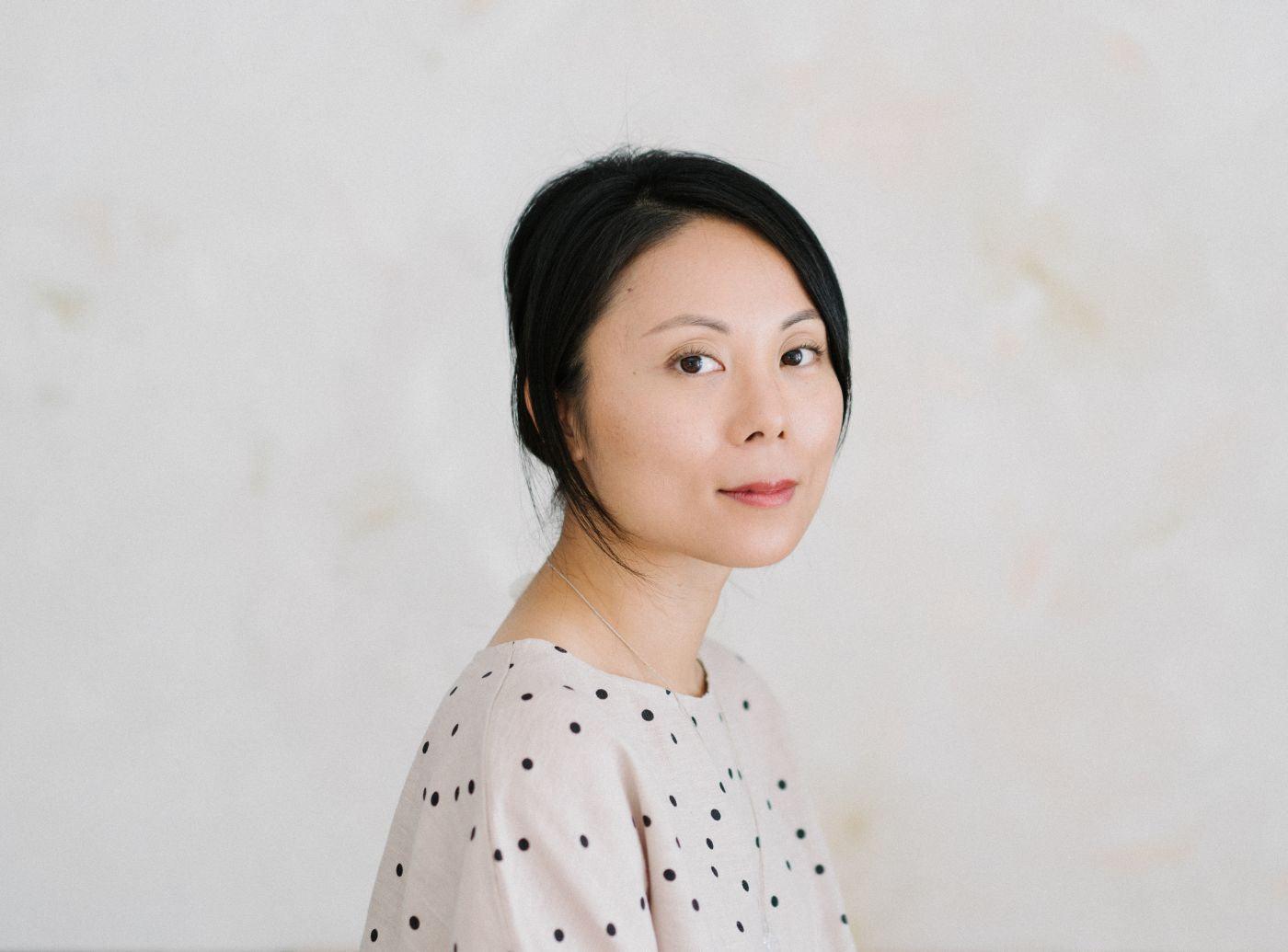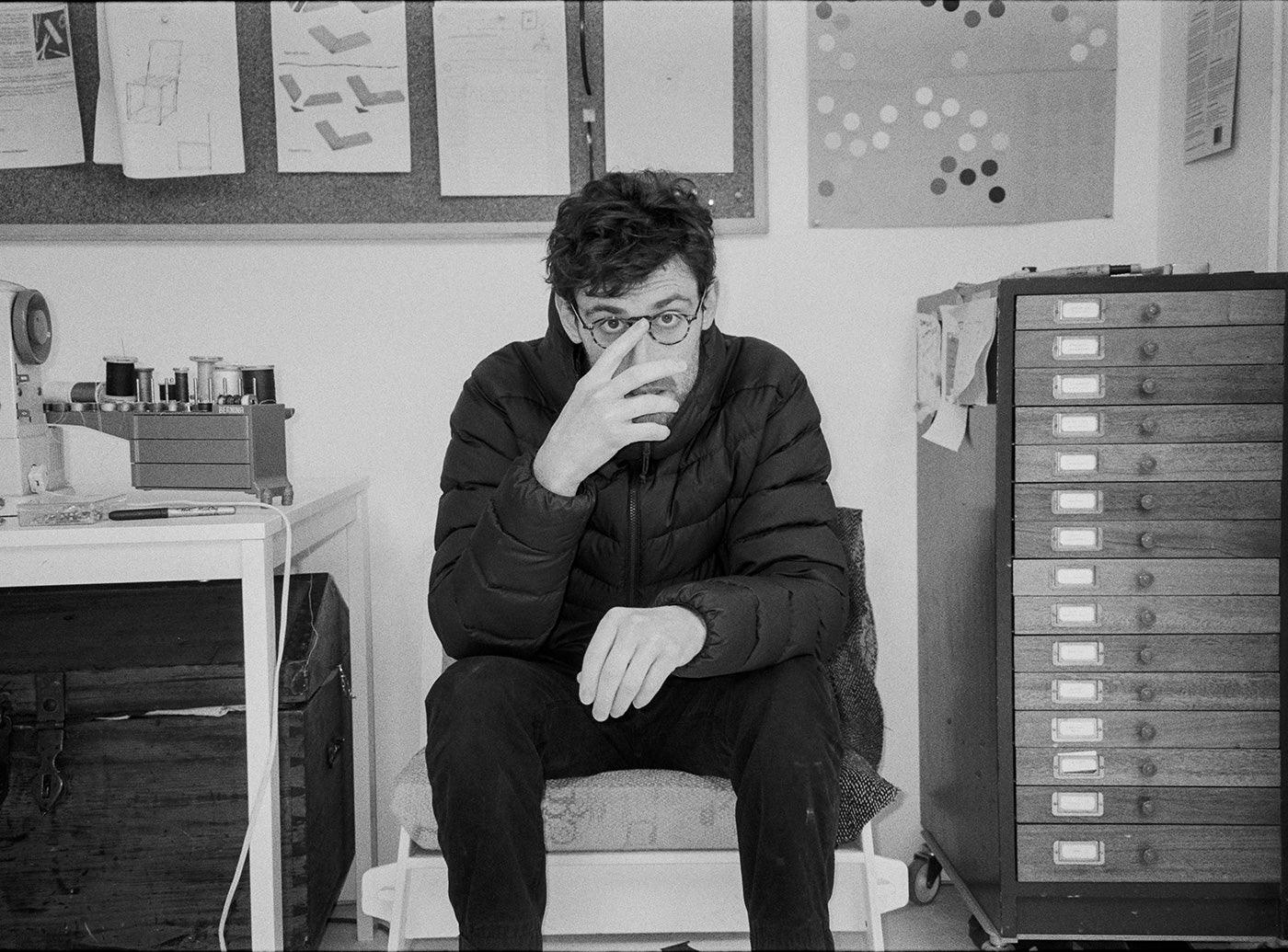
In the Studio | Ethan Caflisch
Ethan Caflisch, the London based artist whose practice encompasses painting, sculpture, photography, art direction and design recently joined us to participate in a residency with Tappan. It was here that he was able to take a deeper dive into his earlier series “i didn’t know you were back in town”, continue his work with “spending the night in a different bed.” and expand his play with titles using Morse code. The multiple bodies of work reflect his well-known pertinent use of color, as well as his ability to represent emotional themes in unique constructs.
TAPPAN
Do you have inspirations you want to speak to (music, experiences, art, feelings, stories) that helped you create the series and collection?
ETHAN CAFLISCH
There’s constantly music playing in my studio, which goes in three long-term shifts.
1. Listening to my library on shuffle
2. Sticking to a specific genre and really diving in
3. Listening to the same album for 3 days straight.
During the residency, I think I was listening to Daniel Caesar and Moses Sumney pretty much every day. There was something about listening to some Neo Soul/R&B that felt really good in the studio. I’m probably overthinking it, but the tempos they used may have helped me work tactfully and methodically.
I don’t really obviously reflect my personal experiences or feelings into new works - the new work really stems from the last piece I've made. The whole studio feels like a huge ship that might try to make a drastic move, but it’s a struggle and usually not very elegant. I find way more success and comfort making work that is in a slow and constant change. That way, I can be strategic, see what’s coming up ahead of me and absorb the waves if I need to. All that said, the work is really boiled down to material, process, and form - i’d say my titling process is where i’m drawing heavy influence from an experience, an event, a feeling, which is super important when making the work I make, to lay out a bit of context through the titles themselves.
There are two important aspects of my practice that are different from a lot of other artists - I always finish the piece I’m working on and I never start a new piece until the piece I’m working on is finished.
TAPPAN
Can you speak to the new bodies of work you created while in residency?
ETHAN CAFLISCH
The sewn works are all about the additive process, and putting pieces together to make a whole - which i think is lovely itself. With that series, i’ve introduced pieces inspired architectural forms, as well as landscapes. I’ve also introduced a new variable in the series, where I begin the pieces by purposefully and mindlessly “fucking up” a section and then fixing it to be reintegrated into the larger piece. I think this ties into my studio as a whole right now, where i’m craving new depth and texture within all my work.
The morse code pieces stem from an earlier series, “i didn’t know you were back in town”, which was less about form and more about color placed in a primary and secondary relationships. I was using the color to inform the larger form on the canvas, with the end goal of a dynamic and balanced piece. When looking at the finished pieces, it became apparent that there was a feeling of pattern, of rhythm that reminded me of language or morse code. At the time I needed some spark to break me out of an artist block I had, so I began pursuing the “Morse Code” series. It’s been nice working with what feels backwards for me - titling first. This series is all about text, the title of the piece, the reduction of letters to squares and circles. You’ll see there are four small pieces on wood panel that tie directly back to the “i didn’t know you were back in town” and bring back color and balance. I’m thinking about surface and texture a lot going forward with this.
TAPPAN
Where do you find inspiration from in your daily life?
ETHAN CAFLISCH
I have a pretty mathematically-based brain, so I’m attracted to various types of structure. It’ll sound pretty cliché, but music is vital in my practice; language as well. I keep a running archive of weird things I hear other people say and often use those sentences to title my work.

Ethan Caflisch says
“THEMATICALLY, THESE WORKS EXPLORE STRUCTURE, THE PASSING OF TIME AND RELATIONSHIPS, ALONGSIDE THE LANGUAGE OF COLOR THEORY AND REPETITION.”


TAPPAN
Your artistic practice was originally rooted in ceramics. What motivated you to move towards painting?
ETHAN CAFLISCH
That’s true, and always kind of a shocking reminder as I rarely work with that material anymore. The story with that is my ceramic work gradually moved from function over form, to form over function. It all started clicking when my sculptures began feeling equally as painterly as they were sculptural. I then started introducing painting techniques and materials that I had been observing from a distance, which eventually turned into pieces that looked more like paintings. I still think that my work is very sculptural; it’s definitely about the object itself, not just the surface treatment I provide. You really have to see the work in person and see the depth and care I put into creating a 3-dimensional object.
TAPPAN
Are there any quotes or mantras that you particularly connect with?
ETHAN CAFLISCH
The equation a(b) + b(a) = ab, which doubles as my artist statement. Conceptually, it’s accurate to how I approach my work.
TAPPAN
Your work often feels pared-back and almost minimalist. What drew you to develop this aesthetic?
ETHAN CAFLISCH
I love the challenge, for sure. It’s really difficult to make work that says a lot with a little.
Also, making work is an inevitable reflection of one’s self. I make work that feels like me, and work that I enjoy while reminding myself that whatever aesthetic is there now won’t totally be there in the future. It should be a life-long development and gradual/continuous exploratory growth.
At the same time, I discipline myself to resist trends. I am making work for now, but I also want the work to be relevant in the future and historically.
TAPPAN
Your titles are emotive, and speak so much to your intentions for the works. How do they come to be?
ETHAN CAFLISCH
I love titling my work. It’s a serious part of my practice; the cataloguing of titles and the making of the work that holds that title. I have a running list of titles to-be in my phone that I go through when a piece is completed, and sometimes that title turns into a series title. When I finish a piece i’ll look through my “available” titles and see what pairs best.
How does a title make its way to the list? They’re either things I hear, overhear or manufacture myself. I’m really picky about what makes the cut. There are certain topics, certain tempos, structures, even the way the words look and feel - as text and how they’re heard. I like titles that are inviting but convoluted, and you get it the first five times you read or hear it, but that sixth time you find something else. I view my titling as a very serious part of my practice, and within that view the titles are sculpture.
With my current paintings in color, I do a lot of sketching on paper and in photoshop. I find it much easier looking at the virtually infinite color wheel than my collection of paints; even though I mix my own colors. As I’m working through color, I’m also working through the form of the final piece. Then, hopefully it’s as simple as enlarging the sketch (but it never is).
TAPPAN
Your body of work incorporates many different materials. What attracts you to working with so many diverse, tactile elements?
ETHAN CAFLISCH
Material is one of the three key variables in my work. It’s where I begin and it’s often is the focal point to the piece itself. I like the physical and mental relationship of working, knowing which processes work with certain materials and also breaking the rules (which sometimes results in breaking my tools).
I am attracted to the natural form of material, often leaving it as its unaltered self; for example, I almost always leave my canvas raw and unprimed.


TAPPAN
What messages or emotions do you hope to convey to your audience?
ETHAN CAFLISCH
The work is made to be enjoyed, it’s supposed to be a beautiful object. So, I hope that my audience takes a minute to breathe with it. I hope it conveys a curiosity, an appreciation; anything really. If I’m able to make a piece that creates some engagement, it’s a successful piece.
TAPPAN
How does modern culture influence your work?
ETHAN CAFLISCH
This is a subject that I am constantly grappling with, especially now. I often feel the necessity to make very political work. But, I feel like my place in the discourse is to make work that feels like a break, something to enjoy, something to ease yourself with, and reflect upon.
Aside from that, maybe less importantly and not a surprise, I draw heavy and direct inspiration from fashion, film, food, music, etc... I’m constantly translating other talented people’s work into ideas I can use in my own.
TAPPAN
Who are some contemporaries or figures in art history who have influenced you?
ETHAN CAFLISCH
Agnes Martin, Frank Lloyd Wright, Cy Twombly, Isamu Noguchi, Käthe Kollwitz.
TAPPAN
What is your life philosophy?
ETHAN CAFLISCH
Yikes.
I’ve long been drawn to, and still constantly remind myself of H.D. Thoreau’s quote “rather than love, than money, than fame; give me truth.” I think this is a crucial mentality to have as an artist, and any other profession; that success, by any definition, will be found in making honest work.
TAPPAN
What art would you love to have in your own collection?
ETHAN CAFLISCH
Recently, I’ve been obsessed with this roughly-sawn wooden 5-piece puzzle from the early 1900s depicting a human head. Immigrants coming through Ellis Island needed to complete in order to enter the country. It’s far from anatomically correct, and the brain is represented by a square. It’s a weird, questionable, but beautiful object.
TAPPAN
What makes you laugh?
ETHAN CAFLISCH
Consistently? Seinfeld, always.
TAPPAN
What makes you nervous?
ETHAN CAFLISCH
Time off.
TAPPAN
What makes you excited about the future?
ETHAN CAFLISCH
That I’m not where I will be.




